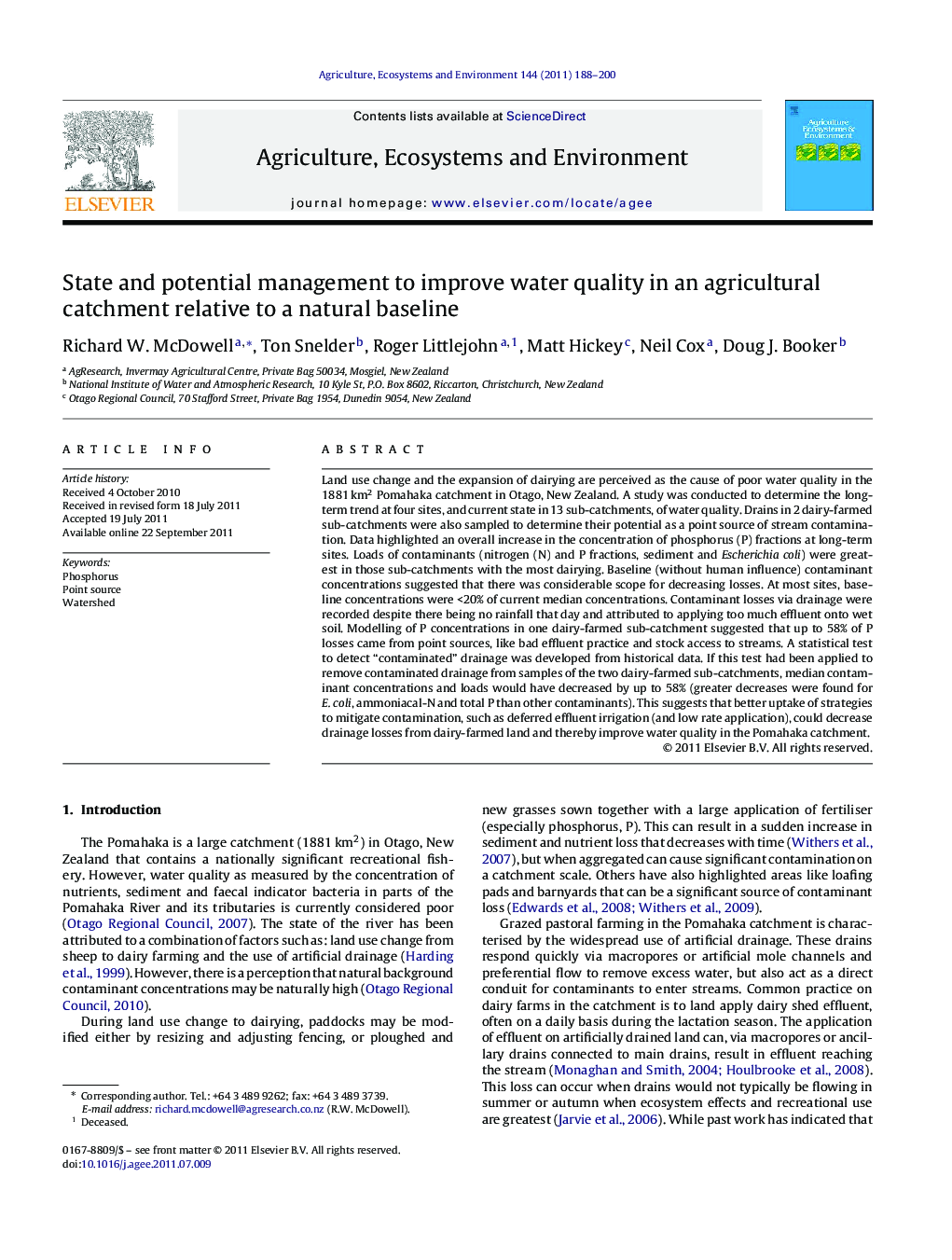| کد مقاله | کد نشریه | سال انتشار | مقاله انگلیسی | نسخه تمام متن |
|---|---|---|---|---|
| 2414768 | 1103929 | 2011 | 13 صفحه PDF | دانلود رایگان |

Land use change and the expansion of dairying are perceived as the cause of poor water quality in the 1881 km2 Pomahaka catchment in Otago, New Zealand. A study was conducted to determine the long-term trend at four sites, and current state in 13 sub-catchments, of water quality. Drains in 2 dairy-farmed sub-catchments were also sampled to determine their potential as a point source of stream contamination. Data highlighted an overall increase in the concentration of phosphorus (P) fractions at long-term sites. Loads of contaminants (nitrogen (N) and P fractions, sediment and Escherichia coli) were greatest in those sub-catchments with the most dairying. Baseline (without human influence) contaminant concentrations suggested that there was considerable scope for decreasing losses. At most sites, baseline concentrations were <20% of current median concentrations. Contaminant losses via drainage were recorded despite there being no rainfall that day and attributed to applying too much effluent onto wet soil. Modelling of P concentrations in one dairy-farmed sub-catchment suggested that up to 58% of P losses came from point sources, like bad effluent practice and stock access to streams. A statistical test to detect “contaminated” drainage was developed from historical data. If this test had been applied to remove contaminated drainage from samples of the two dairy-farmed sub-catchments, median contaminant concentrations and loads would have decreased by up to 58% (greater decreases were found for E. coli, ammoniacal-N and total P than other contaminants). This suggests that better uptake of strategies to mitigate contamination, such as deferred effluent irrigation (and low rate application), could decrease drainage losses from dairy-farmed land and thereby improve water quality in the Pomahaka catchment.
► Water quality decline in the Pomahaka River and tributaries was correlated with land use change.
► Decline was most evident by increasing phosphorus >2003 when the change to dairying was complete.
► Baseline concentrations were estimated at <20% of current concentrations implying there was considerable scope to improve water quality.
► The loss of dairy effluent (and associated phosphorus) via artificial drainage was highlighted as a cause of contamination.
► A statistical test was developed to detect contamination from drainage and, if used in conjunction with better effluent practices, should improve water quality in the Pomahaka River catchment.
Journal: Agriculture, Ecosystems & Environment - Volume 144, Issue 1, November 2011, Pages 188–200